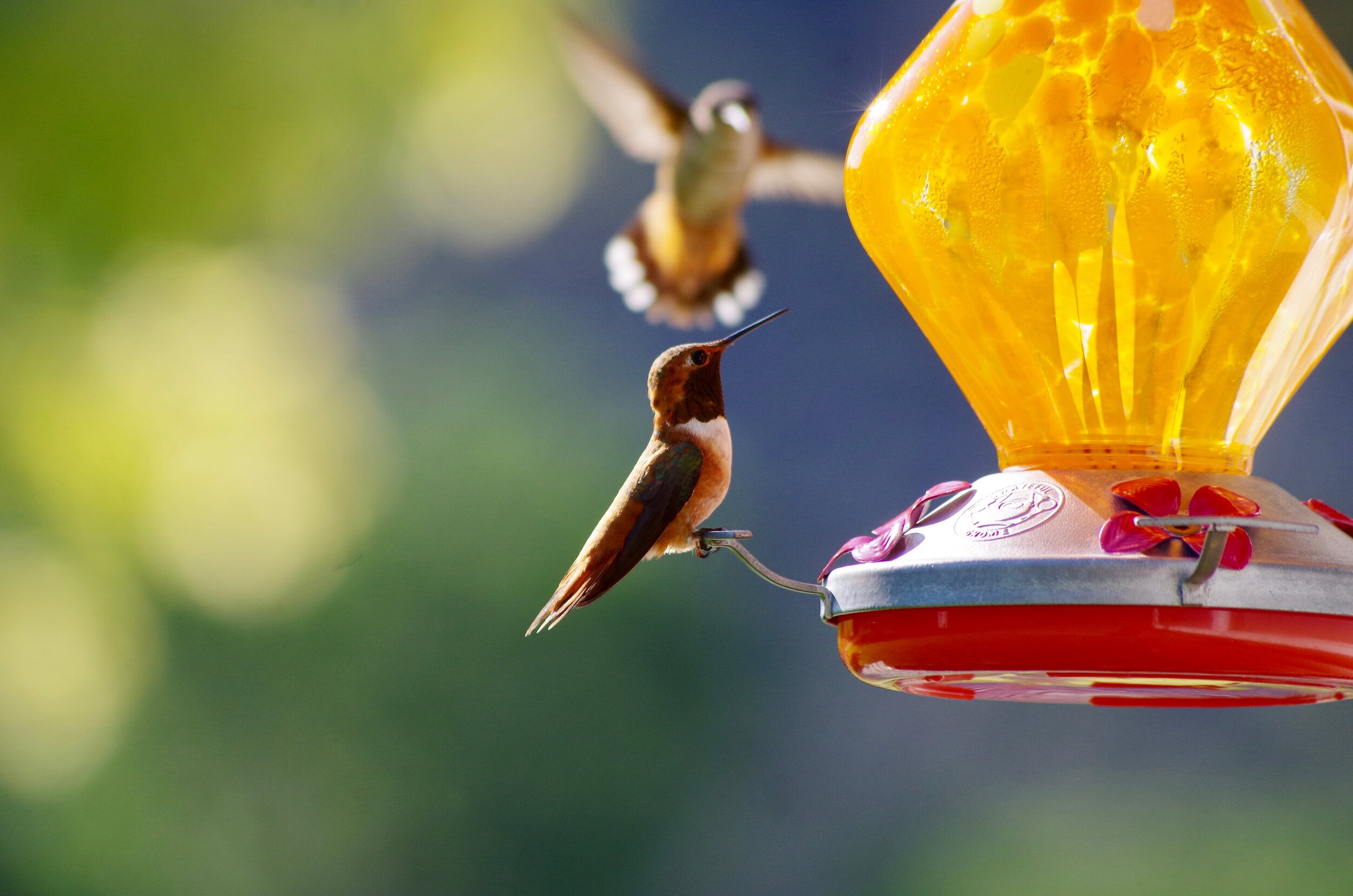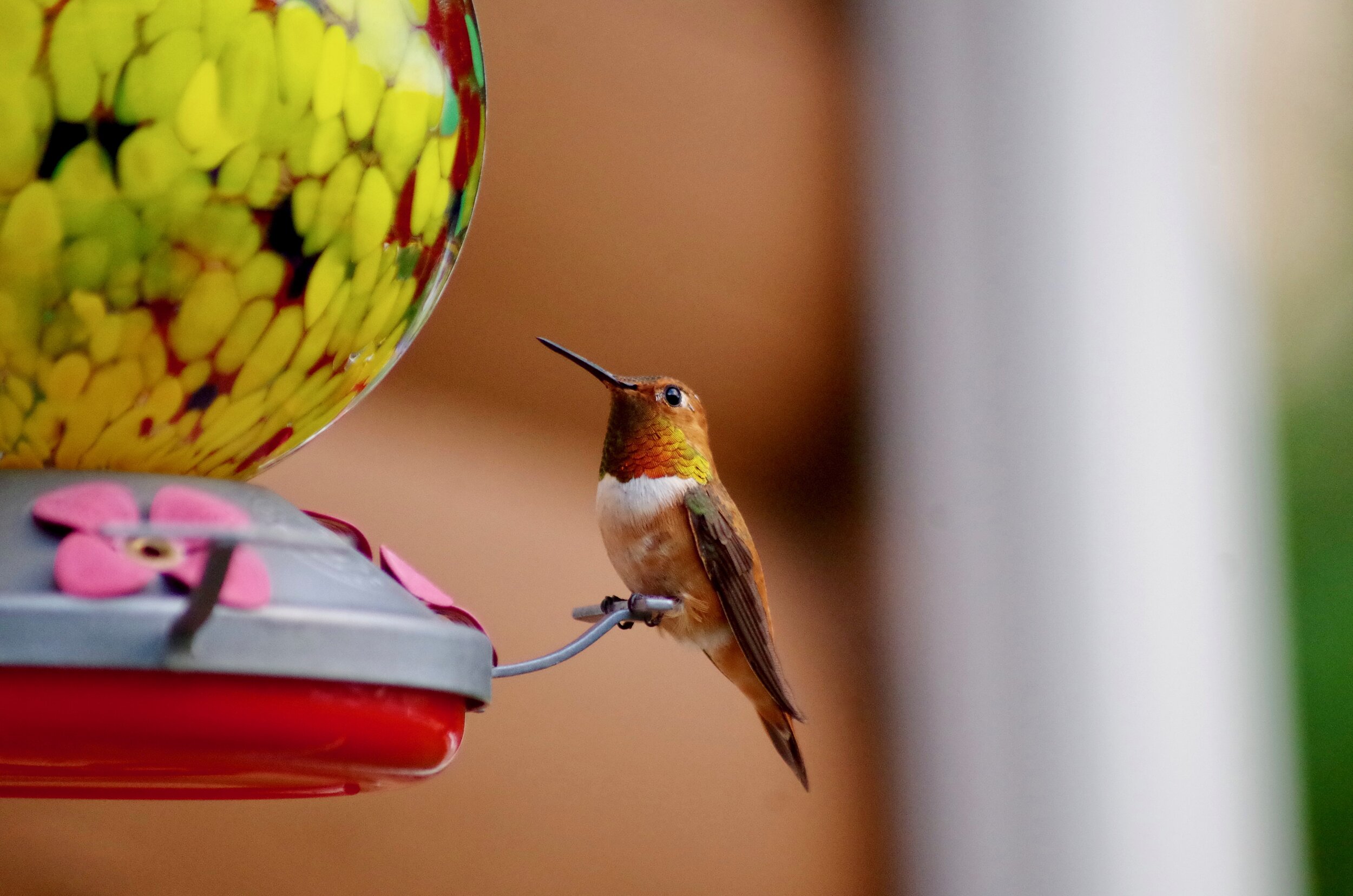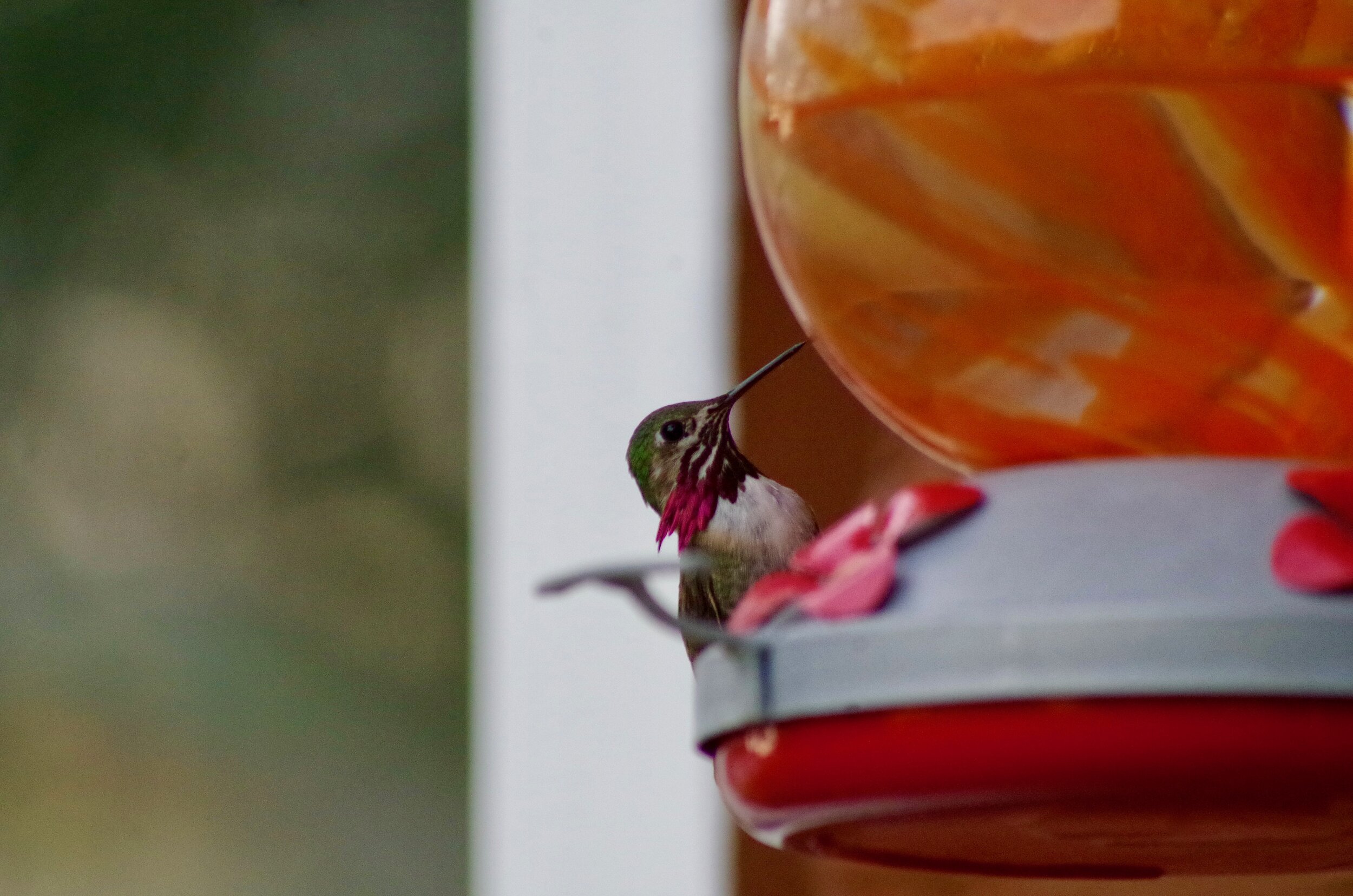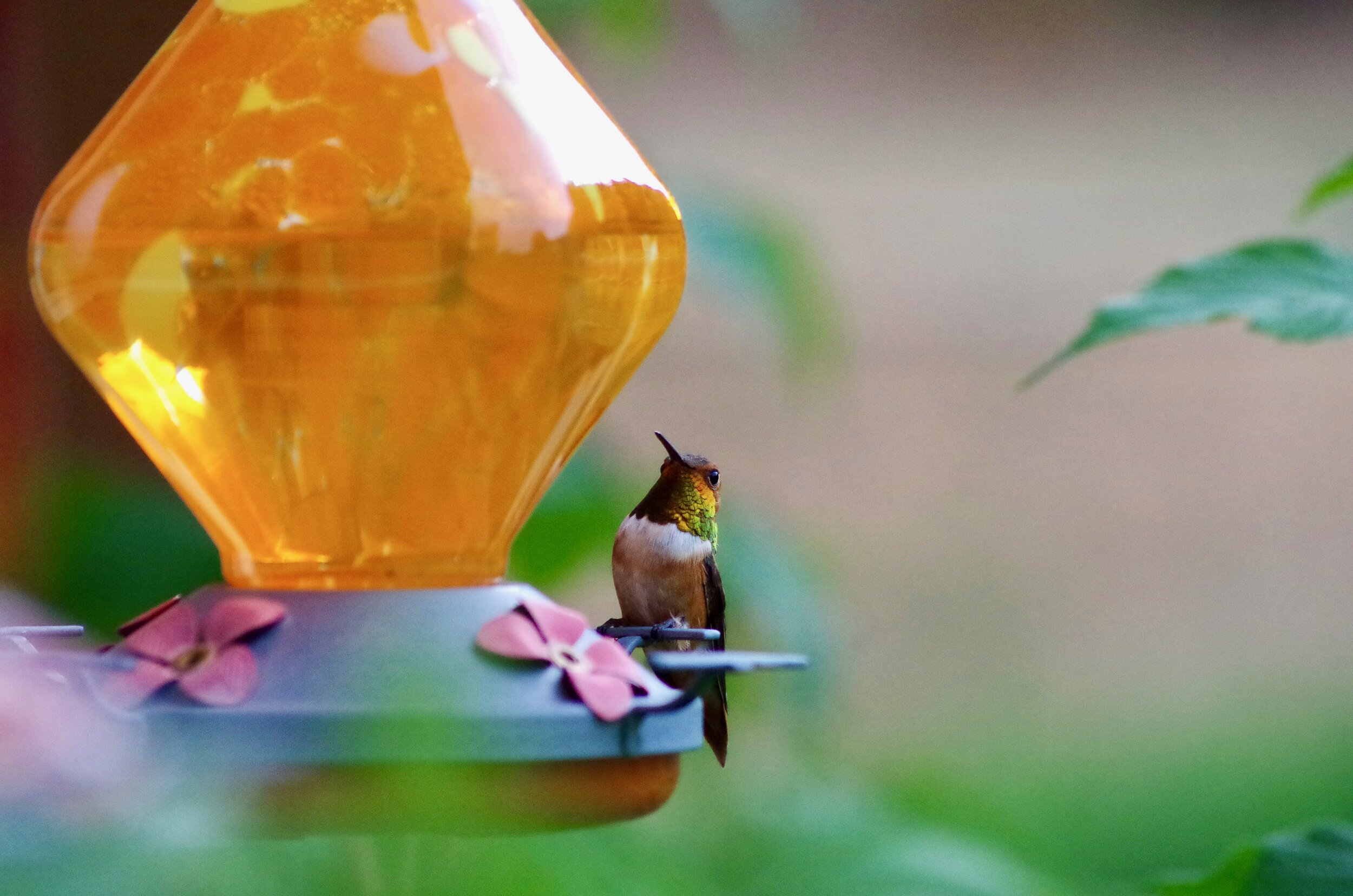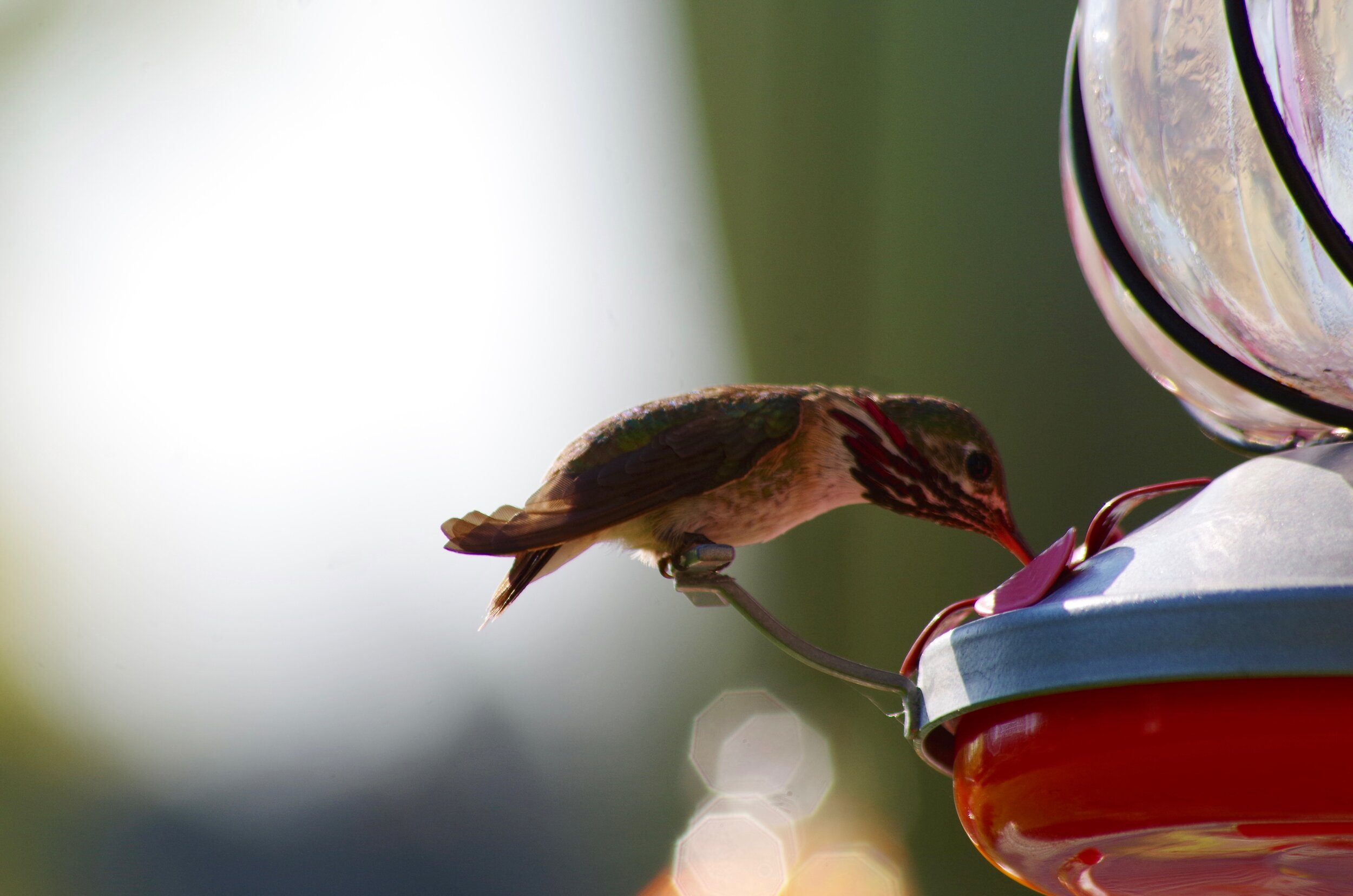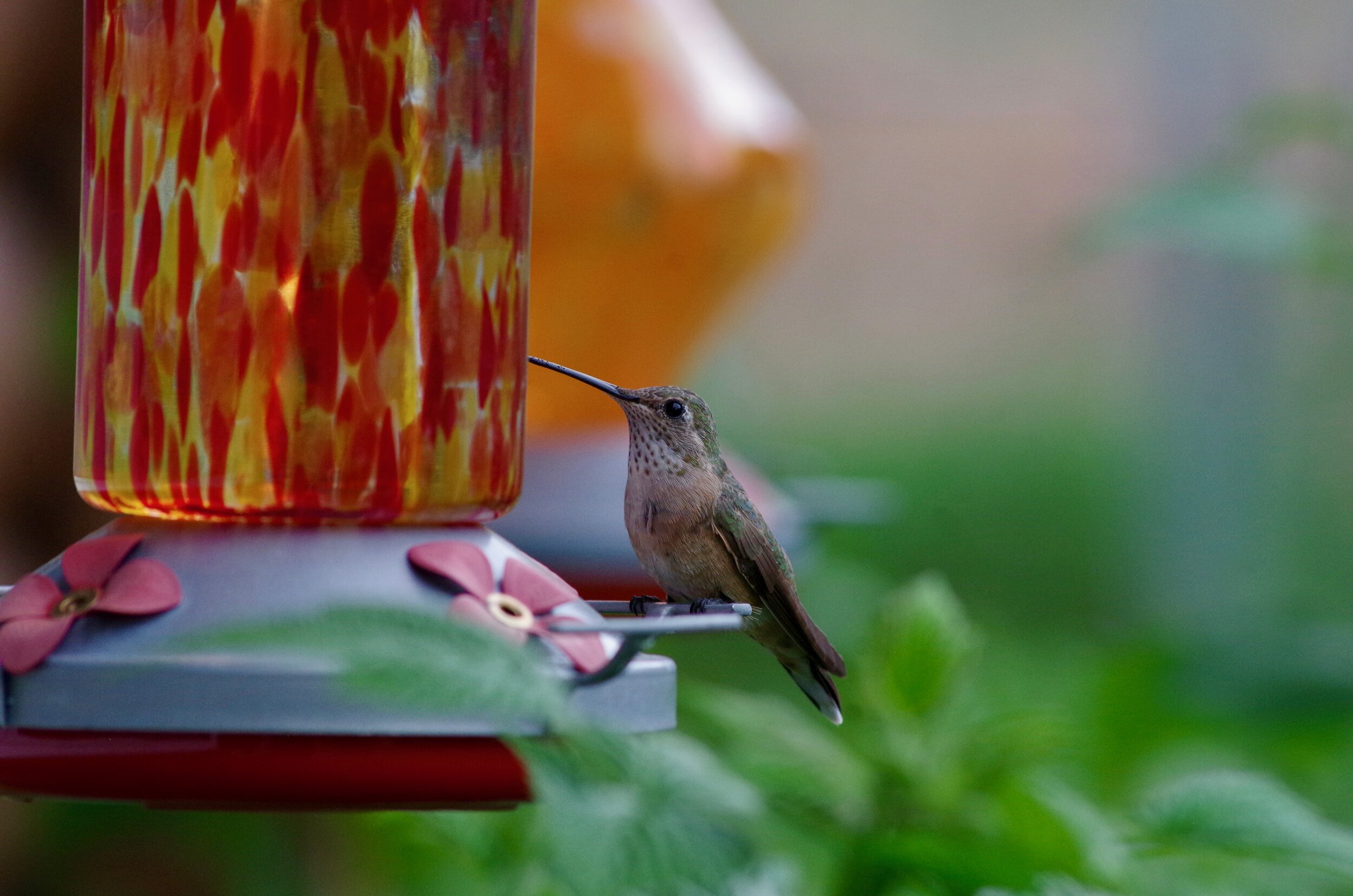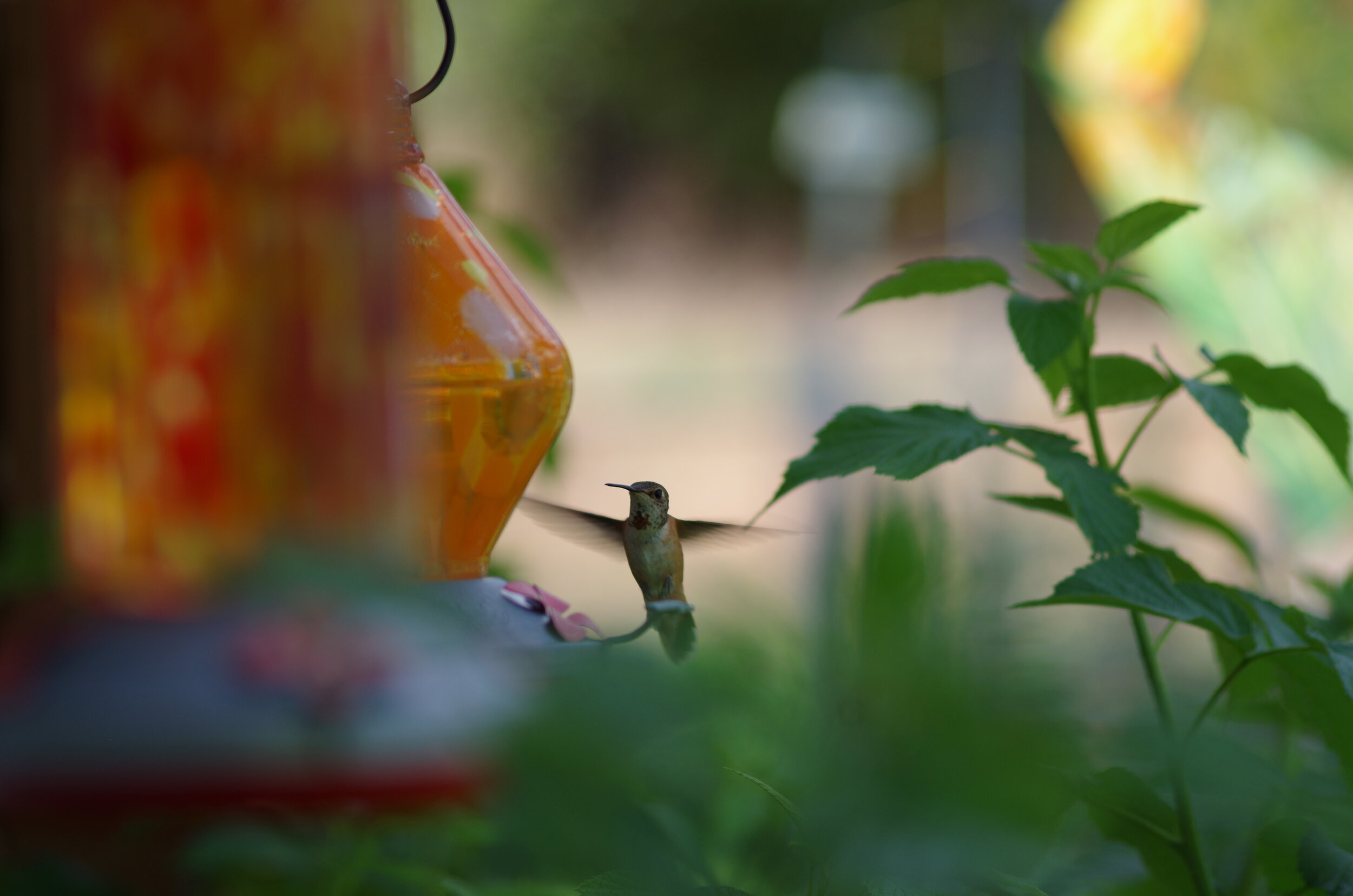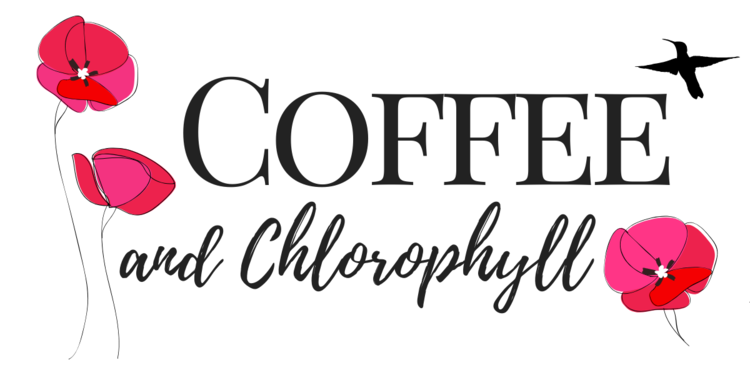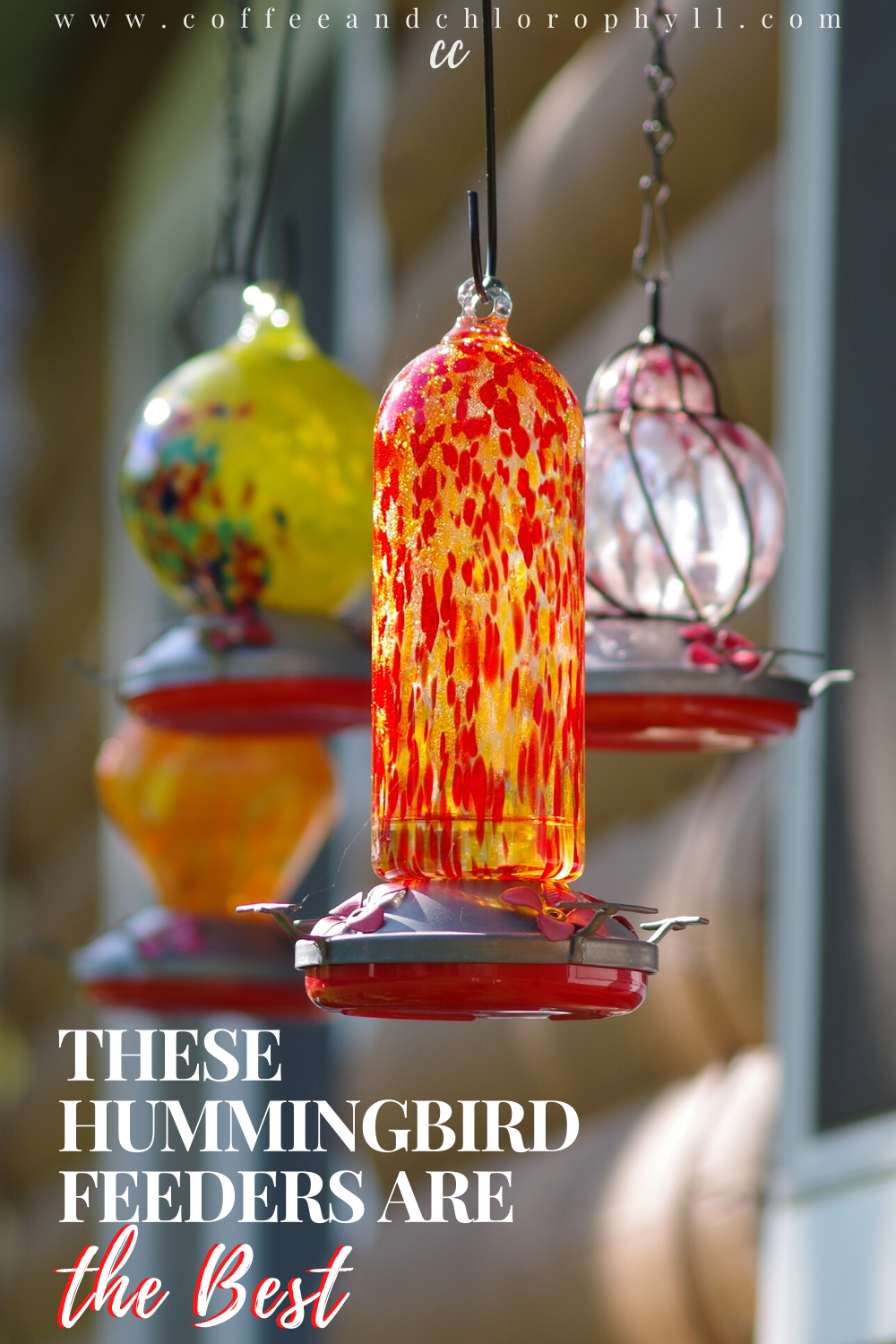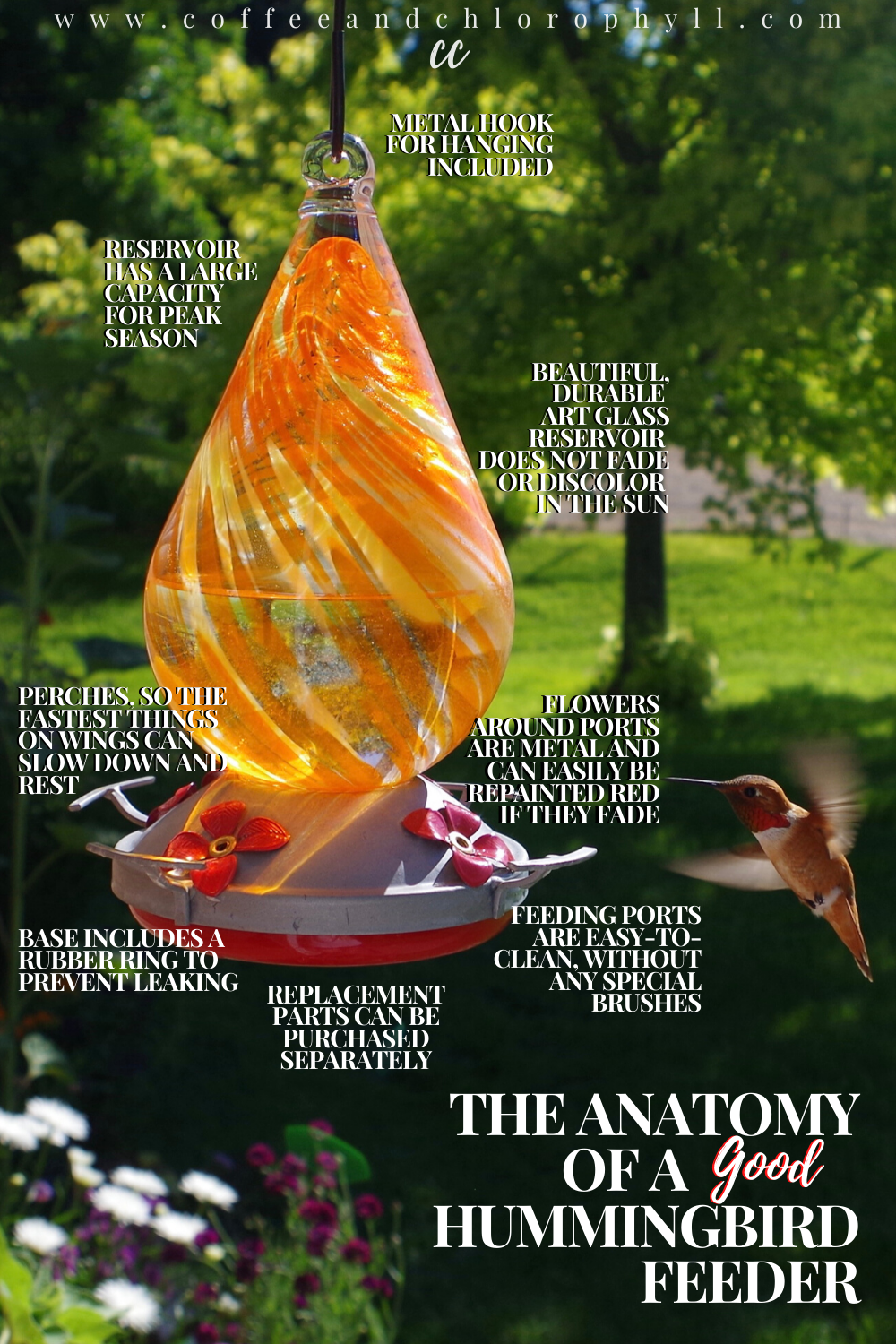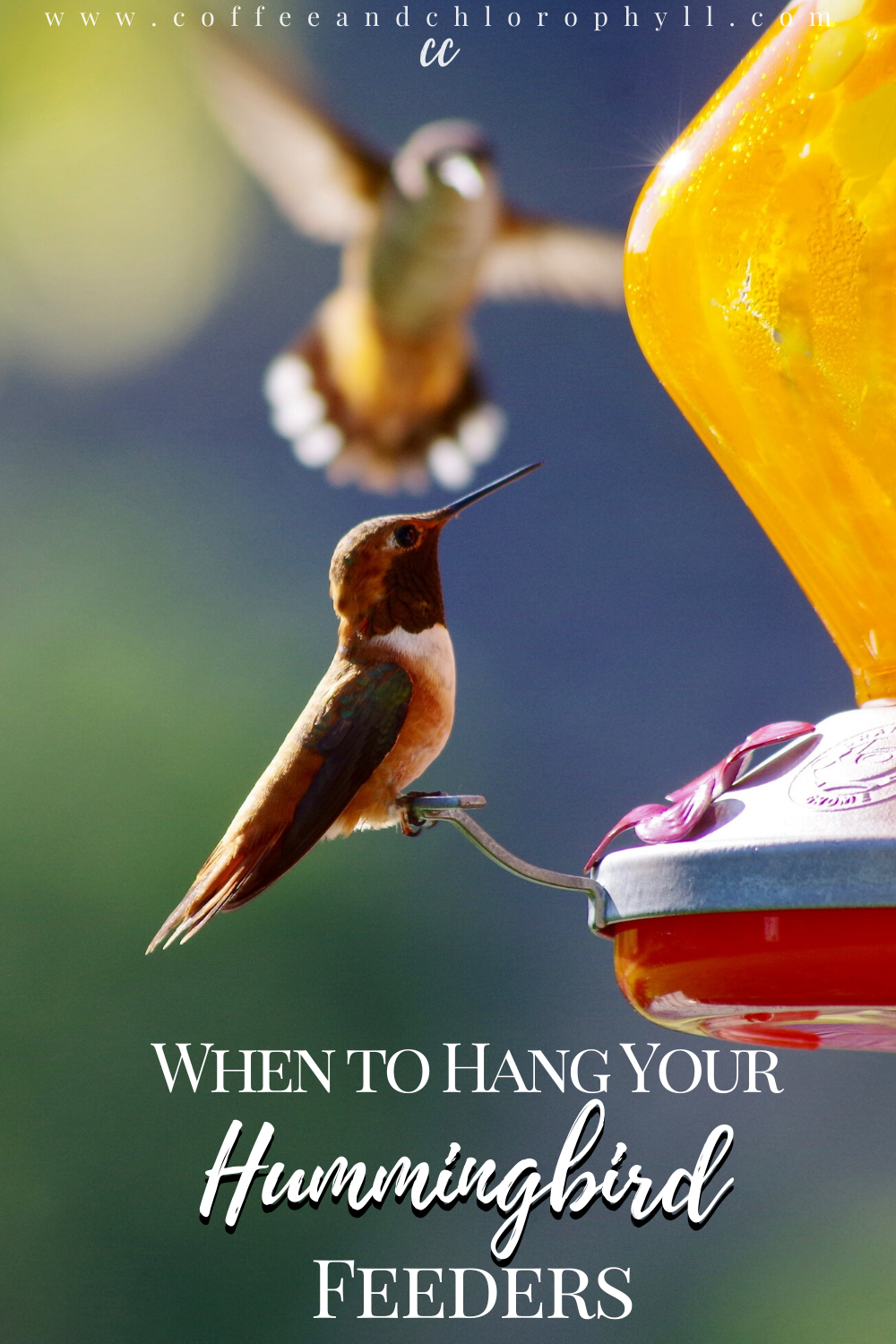Summertime evenings at our last house were magical. With the windows open to catch the breeze, we could hear and see hummingbirds visiting our feeders by the dozens. Broad-tailed, Calliope, and Rufous hummingbirds would all vie for a seat at one of the six feeders we had hung. We could be less than 3 feet away, just on the other side of a window screen, during this feeding frenzy, and they never even noticed us. It was truly an incredible experience!
One thing I learned when catering to such a multitude of zippy, flying jewels is which feeders are the best, and which ones are just meh. After much trial and error, I found a company that makes the best hummingbird feeders, in my humble opinion, and switched almost exclusively to using their feeders. The company is called Grateful Gnome. No, I am not sponsored by them. No, they have never paid me or sent me any free feeders. I simply love their hummingbird feeders and wanted to share them with you!
Finding the Perfect Hummingbird Feeder
I discovered the Grateful Gnome line of hummingbird feeders a few years ago when I was looking around at my gaggle of mismatched feeders. Some were leaking, some had yellowing plastic, some were faded from the sun, and some had missing or broken flowers around the ports. I realized that my feeders all looked a little worn out and weathered, and that, as many as I had, I should at least hang a pretty one out in the front yard, for visitors and passersby to see. I started searching local stores for a higher quality, more decorative feeder. I loved the look of the simple jar feeders, and hummingbirds had no problem finding them, even if they weren’t full of flashy colors, but I wanted something bright and pretty to hang from a shepherd's hook near my front walkway and be like a decorative garden accent.
That is when I found a beautifully intricate red glass jar feeder with a copper base. I used it for a while and then it started leaking. For me, leaking is a major red flag, especially coming from a place where sugar ants are so prevalent. Leaking sugar water attracts hoards of annoying ants, which is a big no-no for me, so it was back to the drawing board. I ended up deciding to get a gorgeous feeder from Grateful Gnome. They called it something like the “Orange Sugar Cube”. When it arrived in the mail, I was surprised at how much more beautiful it was than my other feeders! It was exactly what I was hoping for!
My Sugar Cube hummingbird feeder quickly become the favorite amongst my hummingbirds, as well. I’m not sure if the glass catches their eye more, or if they like the perches, or even if they just liked it’s location—but my Sugar Cube feeder was definitely the most popular with the hummingbirds. I liked how it looked, but even more so, I loved how easy it was to clean.
If you know anything about feeding hummingbirds, then you know that cleanliness is very important. Feeders must be cleaned at least once a week—more than once if temperatures are consistently above 90 degrees F. Some feeders have fake flowers in the ports that require special brushes (they look kind of like mascara brushes) to clean. Other feeders have reservoir bottles with a very narrow opening that I can’t even get a basic bottle brush in. My Sugar Cube could be washed by hand—no special brushes needed.
A few words about how I clean my feeders:
I clean my feeders at least once a week during the season—more often during peak season, when the hummers are emptying the nectar in just a couple days. To clean, I simply empty the feeders and place them in a plugged sink with hot water, as hot as the tap can dispense, and about 1 cup of bleach. I make sure all components are submerged and leave them in the sink while I mix up new nectar, which I make in a 4:1 water to sugar ratio. After feeders have soaked for 5-10 minutes in bleach solution, I rinse them very thoroughly and they are ready-to-go again. My feeders never have any issues with cloudiness, mold, or residues because I stick to this regimen all season.
Several months after purchasing my Sugar Cube, I also noticed a few other things. Unlike plastic that starts yellowing in the sun or getting faded, the glass jar reservoir looked exactly the same as the day I bought it. I also noticed that it didn’t leak, even on windy days. Some of the other plastic feeders I had would spill out in the wind, but even with 20-30 mile per hour wind gusts, my Grateful Gnome Sugar Cube was weighty enough to stay upright and contain it’s sugar water. It also came with an S-Hook that made it very easy to hang—I wish my other feeders came with such a nice, large hook.
After a couple seasons of consistent use, the red metal flowers around the feeding ports on my Sugar Cube were starting to fade—as is normal for something constantly in the sun. The hummingbirds still had no problem finding them, but I spruced them up with some red nail polish and it looked as good as the day I bought it!
One of my other hummingbird feeders sprung a crack in the base during peak hummingbird season. I thought about just ordering a cheap replacement, but Hunter said, “Why would we get another crappy one?! Get one of those pretty ones that will last a while.” And so we ordered another Grateful Gnome Hummingbird Feeder, and it may have been prettier than the first one! By the end of that summer, Hunter had finally had it with my mismatched gang of hummingbird feeders and so he replaced them all with Grateful Gnome feeders in different colors and shapes. To this day, they remain the winners around here—each so beautiful! I am constantly complimented on my pretty hummingbird feeders, to which my response is, “They are also very practical!”
And so, if you can’t tell, I have put a lot of thought into what makes the best hummingbird feeder and also the anatomy of a good hummingbird feeder.
I am not telling you that you have to purchase a Grateful Gnome hummingbird feeder, although, I do recommend them with high marks of praise! But I do want to tell you some things to consider when looking for a hummingbird feeder for your yard, especially if you are ready to step up from a cheap plastic feeder. If you look for these traits, then you can save yourself from some of the duds out there. Although, let’s be 100% honest here, even duds attract hummingbirds! Hummingbirds are not very picky. You can buy a feeder from the Dollar Store, and as long as you keep it cleaned and full of fresh nectar, hummingbirds will use it until the yellow plastic flowers break off and the bottle rots in the sun. When you are tired of these disposable, boring hummingbird feeders, and are ready to invest in a good hummingbird feeder, then consider the following:
Traits to look for in your quest for the Perfect Hummingbird Feeder
It is easy-to-clean. The best hummingbird feeders can easily be broken apart and cleaned. I also like feeders that don’t require special brushes to ensure the feeding ports are clean.
It is glass. I am partial to feeders with glass jar reservoirs, as opposed to plastic, because I find they don’t get moldy as quickly and they never fade, discolor, or rot in the sun.
The reservoir/jar can be easily refilled. If the opening is too narrow, it can be a challenge to refill the nectar solution without having spillage or using a funnel.
It does not leak. Need I say more?!
You can order replacement parts. I never even knew this was an option until I discovered Grateful Gnome. Last year when I dropped one, the plastic base cracked and instead of purchasing a whole new feeder, I could just replace that one piece.
It can hold an appropriate amount of sugar water. This might not be something that you think about when initially purchasing a feeder, but if you have one with too small a capacity, during peak season you may find yourself tired of having to refill it every other day. Pay especially close attention to capacity when ordering online (Example—I’ve seen some pretty little feeders with only a 4 ounce capacity. That is roughly 1/2 cup of nectar and for me, it would be impractical! If you only have one hummingbird, though, it might be just right.)
The flower ports can easily be replaced or repainted. Many feeders with plastic flower ports have the flowers eventually break. Sometimes they break so bad, they leave a big opening, susceptible to wasp and bee invasion.
It has perches, so the hummingbirds can rest. Even if hummingbirds don’t need to sit for a spell, it is always fascinating to watch them while they do. You can get a good look at them if they slow down to perch.
It is easy to hang. This is pretty self explanatory. Sometimes using a patio chain can make a feeder even easier to hang.
It’s beautiful. All things considered, looks should come last, but if you can find all of the above in an artfully-crafted and eye-catching design, then more power to you!
